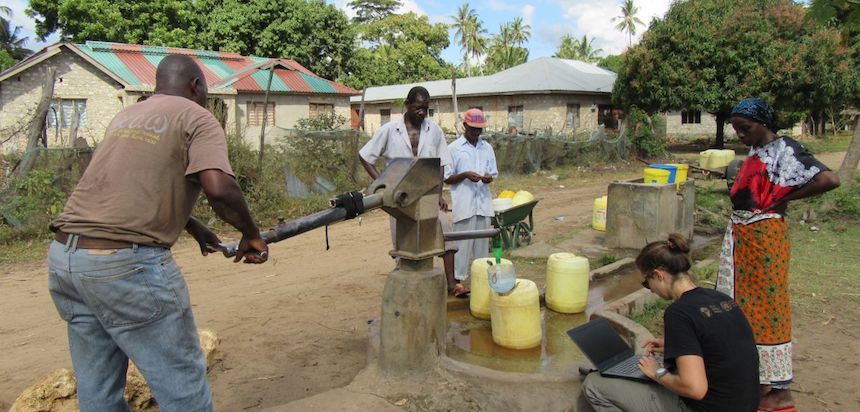
Around one million hand pumps supply groundwater to people in rural Africa. Groundwater is used by around 200 million rural Africans every day because it is a widely available, reliable, and safe source of drinking water. Yet according to a new research paper by the University of Oxford, although groundwater is critical to Africa’s growth and development, there is currently too little data to effectively manage this critical resource. Researchers from the University’s Department of Engineering Science and the School of Geography and the Environment believe they have discovered a new way of addressing the problem, using low-cost mobile technologies fitted to existing hand pumps. They have found that measuring the vibrations as the pump handle goes up and down gives new information about the depth of the groundwater. The researchers say the study has the potential to be scaled up across Africa, meaning that every time a villager pumped water, data could be harvested from the handle vibrations. Data from a network of handpumps across the region could be transmitted and stored in the cloud, creating a public dataset that for the first time monitors groundwater reserves across Africa. The research is supported by the Department for International Development, the U.K. Research Councils and UNICEF.
Oxford says that the Oxford team started trialing “smart handpumps” in sixty villages in rural Kenya in 2012. They discovered that data transmitters fixed to the handle of handpumps enabled them to estimate the amount of water extracted from each pump on an hourly basis. They have now developed a new way of analyzing the data produced by the movement of the handle vibrations. Researchers took recordings of pumping for between twenty seconds to three minutes at sites in Kenya and in Oxford. The readings were transmitted to a laptop from an accelerometer fitted to the pump handle. They found that when the pump is being used to draw water from a deep aquifer, it produces different vibration patterns than when the water level is shallower. The differences in the dynamics of the handpump were analyzed using machine learning techniques, which can pick up subtle patterns in the vibration data to give estimates of the depth of aquifers at the time of drawing up water.
Lead author Dr. David Clifton, Associate Professor of Engineering Science at the University of Oxford, said: ‘This project is a great example of using the latest developments in low-cost mobile sensors and machine learning; working closely with development experts, we can help tackle water security, which is an issue of huge importance in the developing world. This shows what we can do to both build capacity in U.K. science and also help countries meet the United Nations’ Sustainable Development Goals in ensuring access to safe water.’
The amount of groundwater in Africa is estimated to be over 100 time’s greater than annual renewable freshwater sources in the region, says the paper. The research warns policymakers that there is an ‘increasing urgency’ for action as the region faces increasing demands for water from the domestic, industrial and agricultural sectors. Yet the paper says controls over how water resources are conserved and managed are either weak or entirely absent. Unpredictable climate change compounds the situation, which makes this research even more important as it has shown this system has the potential to manage, regular and monitor groundwater resources on a large scale, says the study.
Co-author, Dr. Rob Hope, Associate Professor from the University’s School of Geography and the Environment, said: ‘Over four out of five people without access to clean drinking water live in rural areas and rely on groundwater. This example of “accidental infrastructure” benefits rural communities by providing critical data that helps meet national and global goals for water security. Smart handpumps have already helped reduce downtime in broken handpumps from over a month to under three days. This innovation offers new, valuable data enabling them to anticipate and respond to unpredictable drought events which currently come at enormous social and economic cost to people in Kenya and neighboring countries.’
— Read more in Farah E. Colchester et al., “Accidental infrastructure for groundwater monitoring in Africa,” Environmental Modelling & Software 91 (May 2017): 241–50 (doi: org/10.1016/j.envsoft.2017.01.026)
